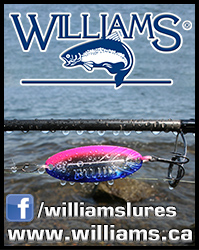DNR launches online tool to report round gobies as sampling efforts continue in Fox River, Lake Winnebago
OSHKOSH, Wis. - Employing tools from social media and the social sciences, the Wisconsin Department of Natural Resources has launched a mobile friendly means to report findings of unwanted gobies in the lower Fox River above the Rapide Croche Dam and in Lake Winnebago.
Anglers who catch a round goby should kill it and if they have access to a mobile device, immediately submit a report of their catch to DNR via an online survey tool.
Round gobies are destructive aquatic invaders that until recently were believed to be downstream of the Rapide Croche lock and dam immediately upstream of Wrightstown on the lower Fox River. However, four gobies caught recently - immediately below the Neenah Dam - provide evidence that the aggressive fish have spread or been introduced upriver, potentially threatening the prized Lake Winnebago fishery.
DNR has been working in partnership with the Fox River Navigational System Authority, which has cooperatively closed the Menasha lock while survey work continues to determine the range and extent of the goby population. In addition to its own shocking, trawling and trapping efforts, DNR staff members believe the most effective way to determine where the gobies are is to seek angler assistance through an online rapid reporting tool - in effect ganging up against the gobies.
"Although gobies can travel significant distances, they tend to multiply in key habitat locations where they can be caught by hook and line anglers," said Kendall Kamke, DNR Oshkosh fisheries team supervisor. "Finding these exact locations can be time consuming, so we are asking anglers to essentially 'crowdsource' the locations of any fish and help us move forward with management decisions as efficiently as possible. We are particularly interested in learning if the species has gotten past the dams at Neenah and Menasha and is present in Lake Winnebago."
Since round gobies were first discovered in the St. Clair River in 1990, the bottom-dwellers have spread rapidly into many areas of the Great Lakes including Lake Michigan. Round gobies can survive even in poor quality water and displace native fish by eating their eggs and young, taking over optimal habitat and spawning multiple times per season, which gives them a competitive advantage.
"In other waters where gobies are found, several species of predator fish such as bass have adapted and now include gobies in their diet," Kamke said. "However, the gobies are so aggressive and become so numerous that they drive out native species and greatly diminish the diversity of the forage base with serious consequences for the food web. Anglers are on the front lines in protecting the Lake Winnebago system from these aquatic invaders and through their help we hope to get a better idea of how widely the gobies may already have spread."
Kamke said there is no way to determine how the gobies arrived in the channel below the Neenah dam, which opens into Little Lake Butte Des Morts. Gobies can be identified by a single, scallop-shaped pelvic fin on the belly of the fish, a black spot on the front dorsal fin, frog-like raised eyes and thick lips. No other native Great Lakes fish possess the single pelvic fin. They range in size from 3 to 6 inches and have a mottled gray appearance.
The gobies that have been caught so far have been taken on hooks baited with pieces of worm. In addition to submitting reports via the mobile friendly survey tool, anglers may visit the DNR Facebook page or website, and search "goby" to file a report. The reports will help DNR and stakeholder groups identify the next steps in management of the invasive species that take into account navigational needs in the region.
Anglers also are being encouraged to bring single dead goby specimens caught on Lake Winnebago or the lower Fox River system below the Neenah and Menasha dams to the DNR Oshkosh office, 625 E. County Road Y, Suite 700, Oshkosh, Wis., 54901-9731. The office is open from 8:30 a.m. to 4 p.m.Monday through Friday. Anglers are reminded that it is illegal to possess live gobies or use them as bait; live bait and water from bait buckets should be disposed of away from the water's edge.










